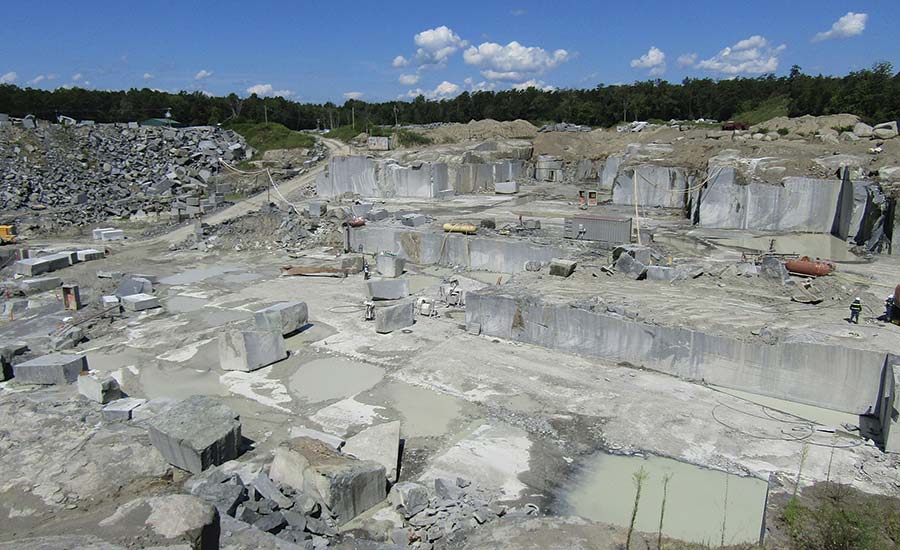Uncovering the Elegance of Granite Quarry in South Africa Wonders
Discovering the Rich History and Lasting Practices of Granite Quarrying
As we depend on the precipice of revealing the detailed tapestry of granite quarrying, a journey with time discloses not just the physical act of extracting stone but additionally the social and historic relevance woven right into the extremely textile of this practice. From the old beginnings that laid the foundation for contemporary quarrying methods to the lasting techniques that are shaping the future of this sector, each chisel mark on granite surface areas narrates waiting to be unearthed (granite quarries in south africa). The heritage of granite quarrying stretches much beyond mere removal; it is a testament to human resourcefulness, durability, and the enduring allure of this impressive rock
Ancient Beginnings of Granite Quarrying
Going back to old civilizations, the technique of quarrying granite has been an integral component of human background and building advancement. The earliest evidence of granite quarrying days back to ancient Egypt, where massive pyramids and complex sculptures were crafted from this long lasting stone. The Egyptians used primitive devices to remove granite blocks from quarries, showcasing the significance of this material in their huge constructions.
Progressing in history, the Greeks additionally made considerable contributions to the quarrying of granite. The Greeks used granite in different building wonders, such as temples and statuaries, demonstrating their ability in shaping and carving this durable stone. The Romans further improved the strategies of quarrying granite, utilizing innovative tools like blades and hammers to extract and form granite for their iconic structures.
Via the centuries, the practice of quarrying granite has actually evolved, with modern-day innovations boosting efficiency while maintaining the classic allure of this natural stone - granite quarries in south africa. From ancient civilizations to modern home builders, the legacy of granite quarrying proceeds to shape our globe
Advancement of Quarrying Methods
The advancement of quarrying techniques has actually been marked by a constant development in the direction of greater performance and precision in drawing out granite. From the simple methods employed by our forefathers to the innovative innovations made use of in modern quarrying procedures, the sector has actually undertaken considerable innovations. Early quarrying strategies entailed manual work with fundamental devices such as knives, hammers, and wedges to extract granite blocks from the planet. As civilizations proceeded, methods like fire-setting and primitive explosives were introduced to promote the removal process.
Advancements in computer-controlled devices and 3D modeling have actually enhanced quarrying operations, leading to very little ecological effect and enhanced sustainability techniques. As the need for granite continues to increase, the advancement of quarrying techniques stays indispensable to conference industry needs efficiently and sustainably.
Social Significance of Granite
Granite holds an extensive cultural importance across various people due to its long-lasting presence in building masterpieces and admired monoliths. The social importance of granite extends past its physical characteristics; it embodies durability, stability, and eternity, making it an icon of sustaining legacies and customs.

Sustainable Practices in Quarrying
Among the abundant background of granite quarrying and its social significance lies an expanding emphasis on lasting methods within the sector. As ecological understanding and problems concerning source deficiency have heightened around the world, the quarrying field has progressively accepted sustainable techniques to lessen its impact on the setting and bordering communities.

In addition, reclamation and rehabilitation of quarry sites post-extraction are important to sustainable methods. By restoring quarried locations to Bonuses an all-natural or beneficial state, such as producing wild animals environments or leisure rooms, quarriers can balance out the ecological impact of their operations and contribute favorably to the local environment.
Tradition of Granite Quarrying
With a historic background steeped in craftsmanship and commercial progress, what enduring impact has granite quarrying left on the landscape of contemporary culture? The tradition of granite quarrying goes beyond simple extraction techniques; it has actually formed building marvels, urban landscapes, and social heritage worldwide. The long lasting nature of granite has made it a favored selection for monuments, structures, and framework, standing as a testimony to the skill and virtuosity of quarry workers throughout generations.
In addition, the financial footprint of granite quarrying can not be ignored. The industry remains to give employment chances and drive regional economic climates in areas where granite removal prevails. It has actually also stimulated technological developments in quarrying strategies and tools, leading to extra reliable and lasting practices.
In terms of sustainability, the tradition of granite quarrying consists of efforts to minimize ecological effects via reclamation projects and liable source monitoring. By balancing economic passions with ecological stewardship, the market makes every effort to ensure that future generations can continue to take advantage of this long-lasting natural deposit.
Final Thought
